BMW R 100 RS
Ian Falloon
When BMW released its ground-breaking R 90 S fifty years ago, it changed the popular perception that BMW motorcycles were staid, stodgy, and only suitable for wealthy geriatrics. That changed in an instant after Hans A Muth created a styling masterpiece, and the R 90 S was a real Superbike.
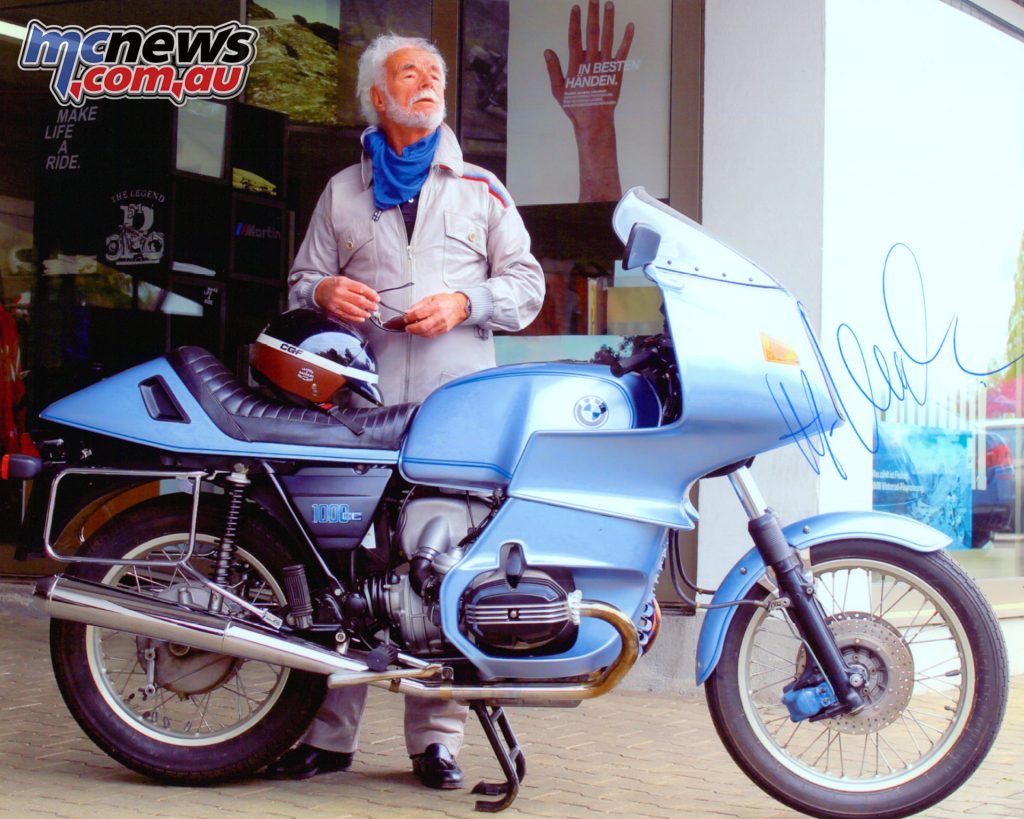
Yet, while swift and comfortable, it came in for some criticism regarding high-speed stability and only offered minimal weather protection. The high steering inertia of the handlebar-mounted fairing accentuated this instability, and a year or so later Muth was asked to create a new motorcycle with a more integrated aerodynamic fairing.
The result was the R 100 RS, arguably even more significant to BMW than the R 90 S. “RS” stood for “Rennsport”, and was intentionally used to create an association with the magnificent double overhead camshaft RS 54 racers of 1954. Underneath the large fibreglass fairing was also the most powerful incarnation of the boxer yet, and the R 100 RS created a sensation when it was released at the Cologne Show towards the end of 1976.
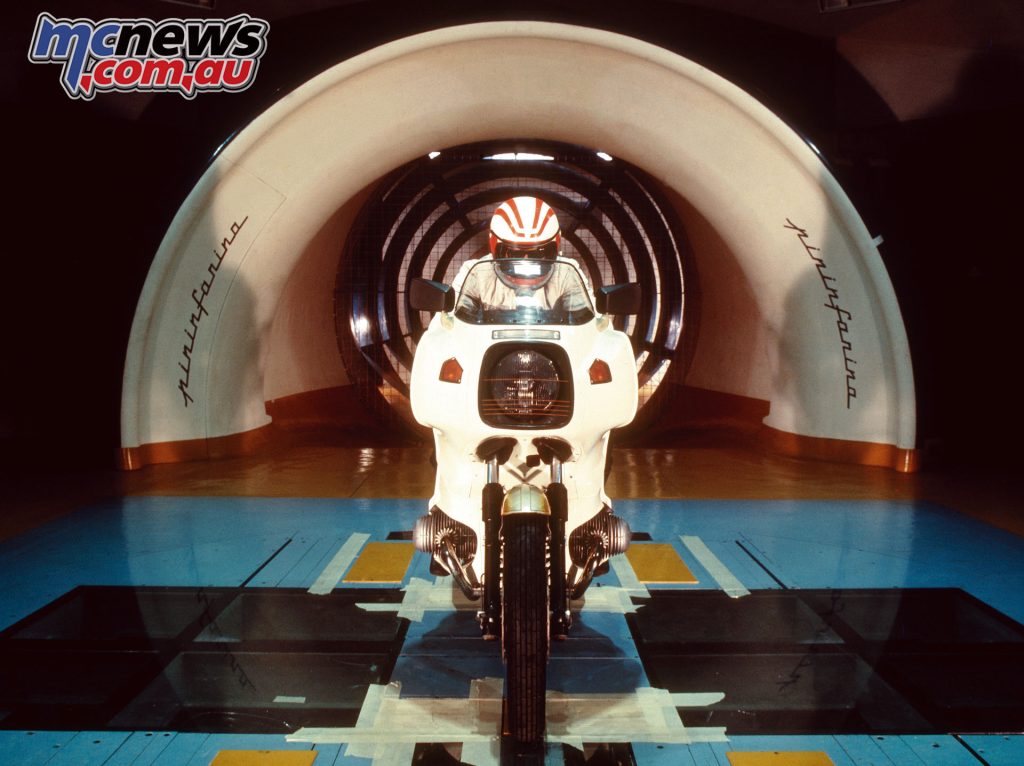
The R 100 RS was the first motorcycle to incorporate a fairing providing rider protection, aerodynamic function, and motorcycle stability. Hans A Muth and Günther von der Marwitz hired the Pininfarina wind tunnel in Italy for the development of the R 100 RS fairing.
It cost BMW $7,000 a day, a substantial sum in 1976. The nine-piece fairing design was so advanced it still continues as a benchmark in motorcycle-fairing efficiency, and few later examples can match it. The RS fairing was claimed to reduce front wheel lift by 17.4%, drag by 5.4%, and the yawing movement in side-winds by 60%.
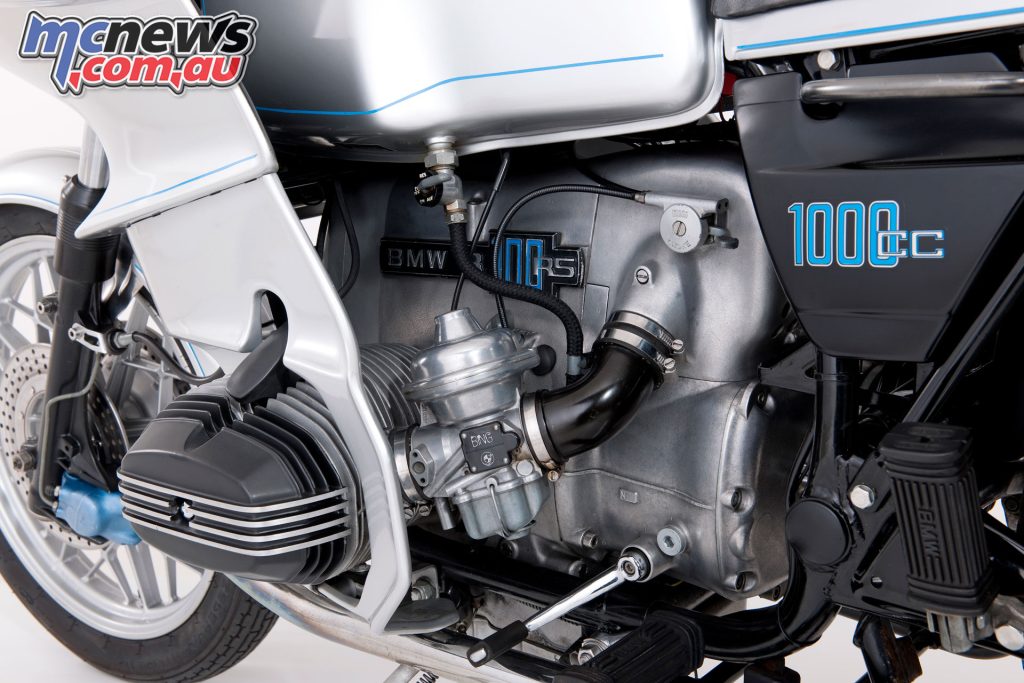
All this, with a weight penalty of only 9.5kg. But there was more to the R 100 RS than an efficient fairing. The engine was bored to 94mm to provide 980cc, and with larger valves, the power went up to 70 horsepower at 7250 rpm.
Instead of the concentric “pumper” Dell’Orto 38mm carburettors of the R 90 S, the R 100 RS received Bing 40mm constant-vacuum carburettors. Although the frame and swingarm were essentially unchanged, a second transverse tube was added between the front double downtubes, and the frame tubing was a thicker section.
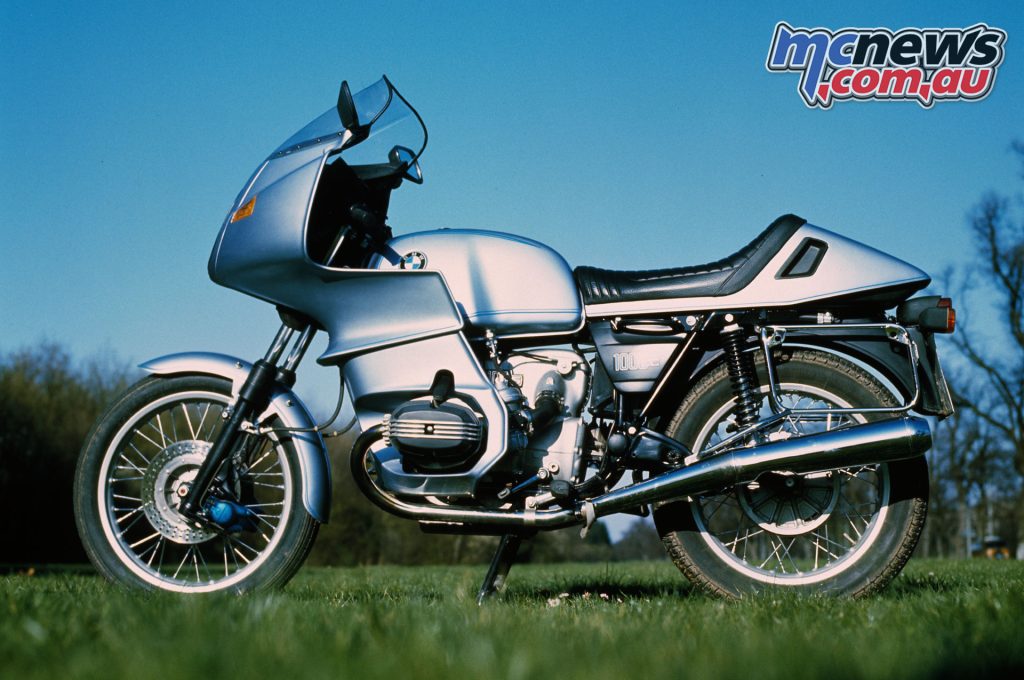
Despite these welcome improvements, the front fork still included the weak pressed-steel upper triple-clamp, and the rear subframe was bolted on as before. Most early R 100 RSs were fitted with spoked wheels, and a drum rear brake, but from 1978, all RS models came with snowflake cast-alloy wheels with a rear disc brake.
If the R 90 S stretched the sporting boundaries with its low handlebar and semi-racer riding position, the R 100 RS took this a step further. The narrow, clip-on style handlebar fitted inside the fairing, and provided a surprisingly aggressive riding position.
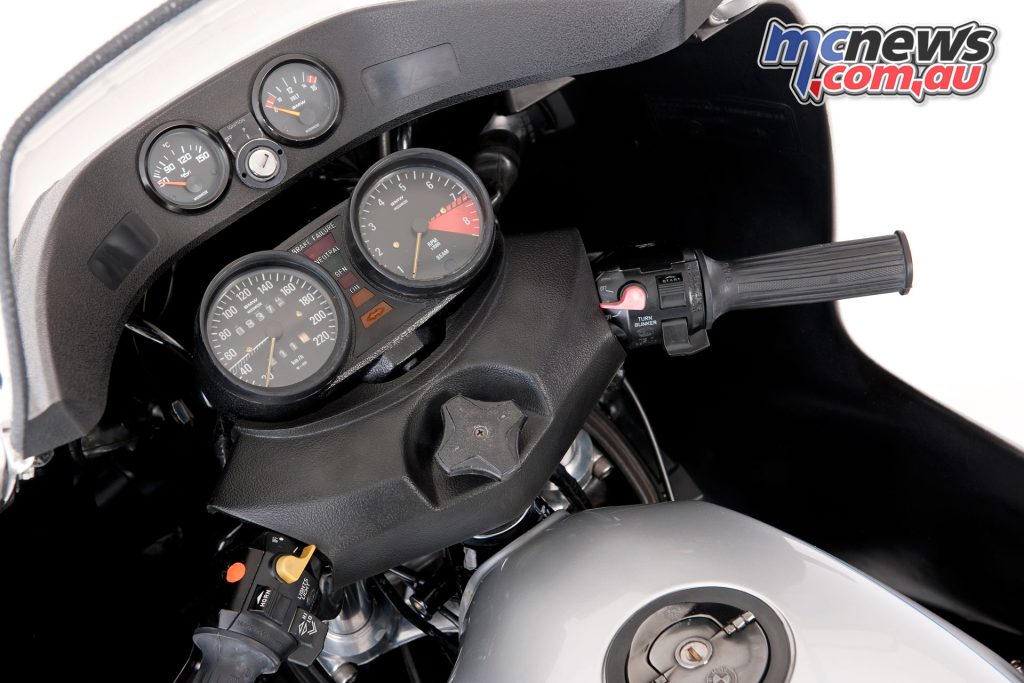
Considerable weight was placed on the wrists, encouraging high-speed touring. There was also the choice of a standard dual, or sporting solo, an almost one-and- a-half seat.
Updates to the R 100 RS came almost annually, through until, arguably the finest model, the 1981-84 series. For 1979, the camshaft drive was completely revised, an automotive-style rotary contact-breaker ignition fitted along with an oil cooler, and torsional vibration damper added to the driveshaft.
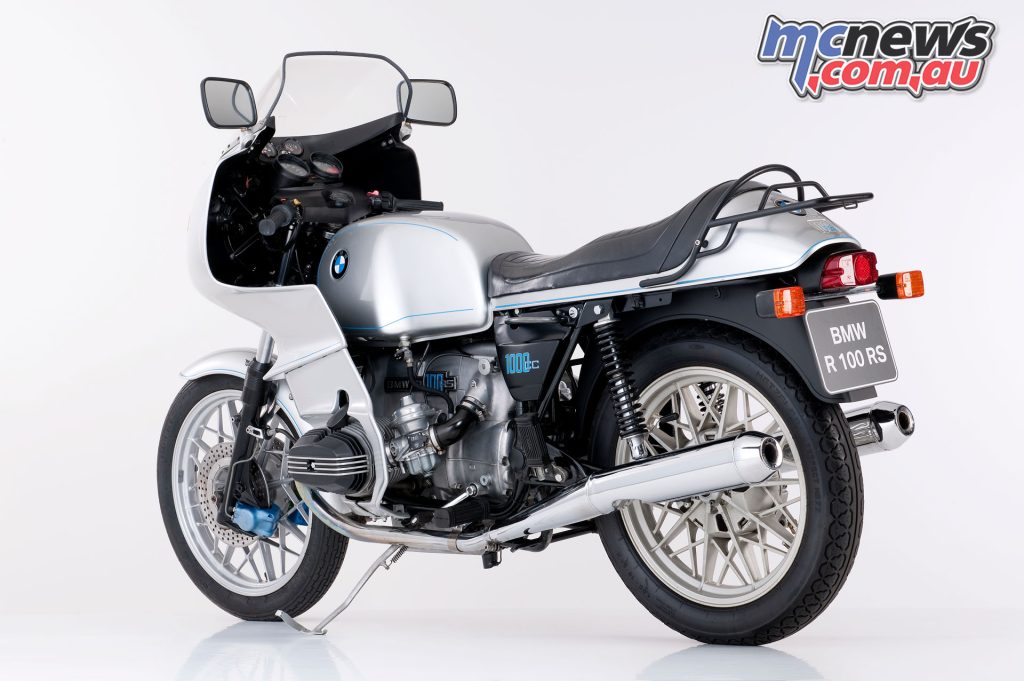
In October 1979, an R 100 RS was prepared for an attempt on a series of long-distance records. At Nardo in Italy, a team of four riders (Dähne, Cosutti, Milan, and Zanini) set five new world records, including an average speed of 220.711 km/h over 100 kilometres.
Most development was saved for the 1981 model. This year saw Galnikal cylinders, electronic ignition, a plastic airbox with flat air filter, a much lighter flywheel and clutch assembly, and superior Brembo front brakes. The front-brake master cylinder also was moved from underneath the fuel tank to the handlebar.
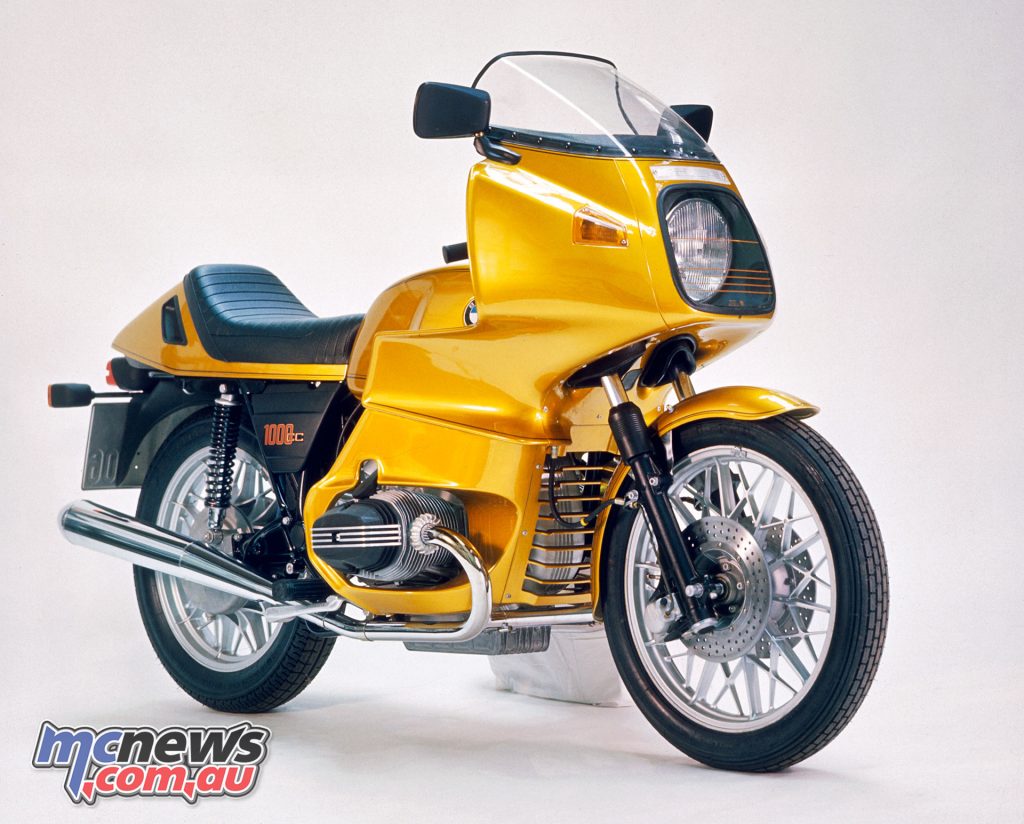
Although the K 100 RS was intended to replace the R 100 RS from 1984, public demand saw it return only two years later. The resurrected R 100 RS ran through until 1992.
The R100RS was one of the most expensive motorcycles available in the late 1970s and early 1980s. And despite retaining a relatively unsophisticated engine, it could still match any other sport-touring motorcycle, even its replacement, the four-cylinder K 100 RS.
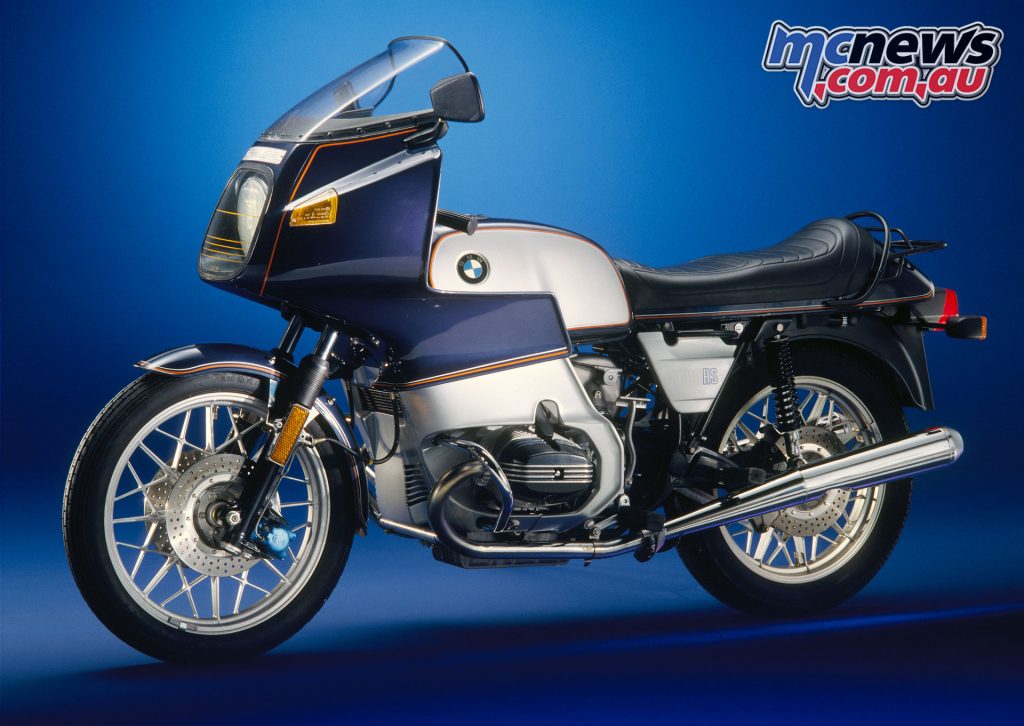
The weight was a moderate 210kg, and the combination of a large 24-litre fuel tank, long-travel suspension, and the enveloping fairing, made it an incomparable road-burner. Even today, an R 100 RS is a highly competent sport-touring motorcycle, one eminently suited to potholed modern highways, if not overly enforced speed limits.
While the K 100 has vanished into obscurity, the R 100 RS was another BMW masterpiece. Easy to maintain and reliable, the R 100 RS is a bargain classic.
BMW R100 RS Specifications
| BMW R100 RS Specifications | |
| Engine | Four-stroke two cylinder horizontally opposed “Boxer” engine, air cooled, two-valves per cylinder, HHV, pushrod and rockers |
| Bore x Stroke | 94 x 70.6 mm |
| Displacement | 980 cc |
| Max Power | 51 KW (70 hp) at 7250 rpm |
| Max Torque | 76 Nm (56 ft-lbs) at 5500 rpm |
| Compression Ratio | 9.5 : 1 |
| Carburation System | Two CV carburettors, Bing 94/40/105 – 94/40/106 |
| Engine Lubricating System | Wet sump |
| Clutch | Dry single plate, with diaphragm spring |
| Gearbox | Five-speed |
| Ignition System | Battery ignition. From Sept 1980: contact free electronic ignition (Bosch) |
| Frame | Double loop tubular frame with bolt on rear section |
| Front wheel suspension | Telescopic fork with hydraulic shock absorber |
| Rear wheel suspension | Long swinging arm with adjustable strut |
| Wheels | 1.85 B 19 (F), 2.50 B 18 (R) |
| Tyres | 3.25 H 19 (F), 4.00 H 18 (R) |
| Brakes, Front | Dual disc brake 260 mm / 10.23 in diameter. ATE 1 piston caliper up to 1981. 1981 models Brembo 2 piston caliper |
| Brakes, Rear | Simplex drum brake 200 mm / 7.87 in diameter (from 1978: single disc brake 260 mm / 10.23 in diameter) |
| Length x Width x Height | 2130 (from 1978: 2210) x 746 x 1300 mm |
| Wheelbase | 1465 mm |
| Fuel Tank Capacity | 24 litres |
| Weight | 230 kg wet |
| Top Speed | 200 km/h |























